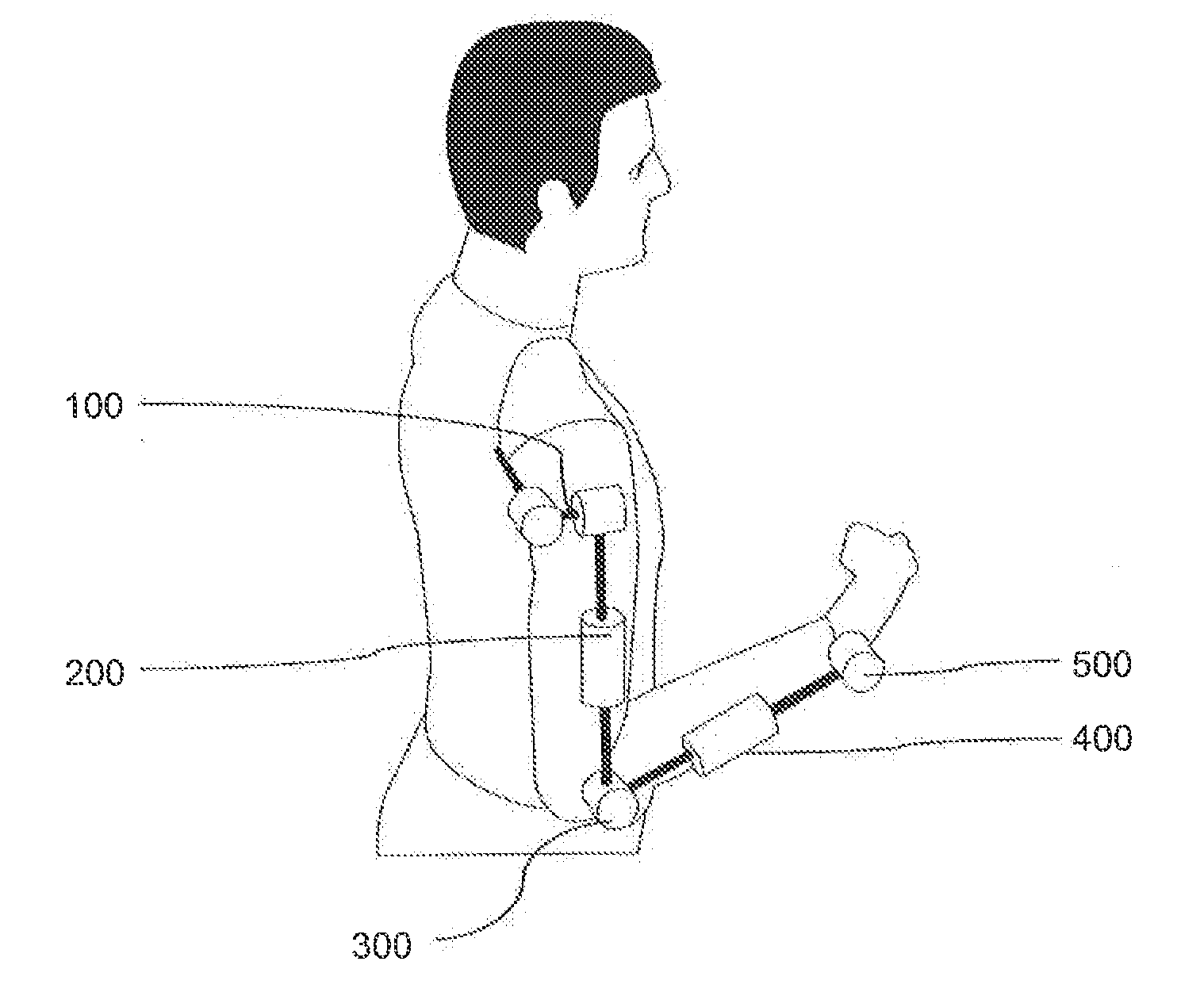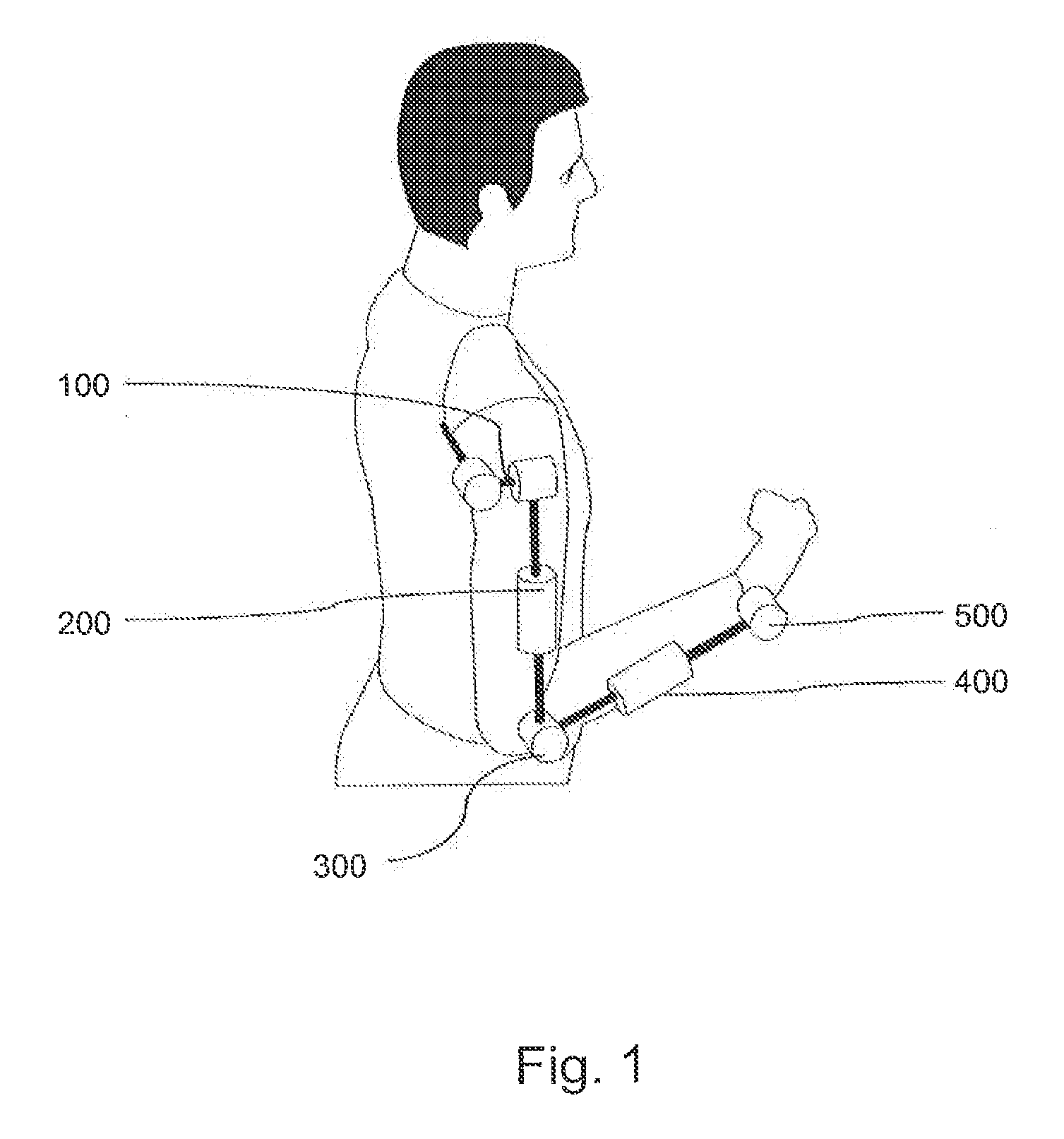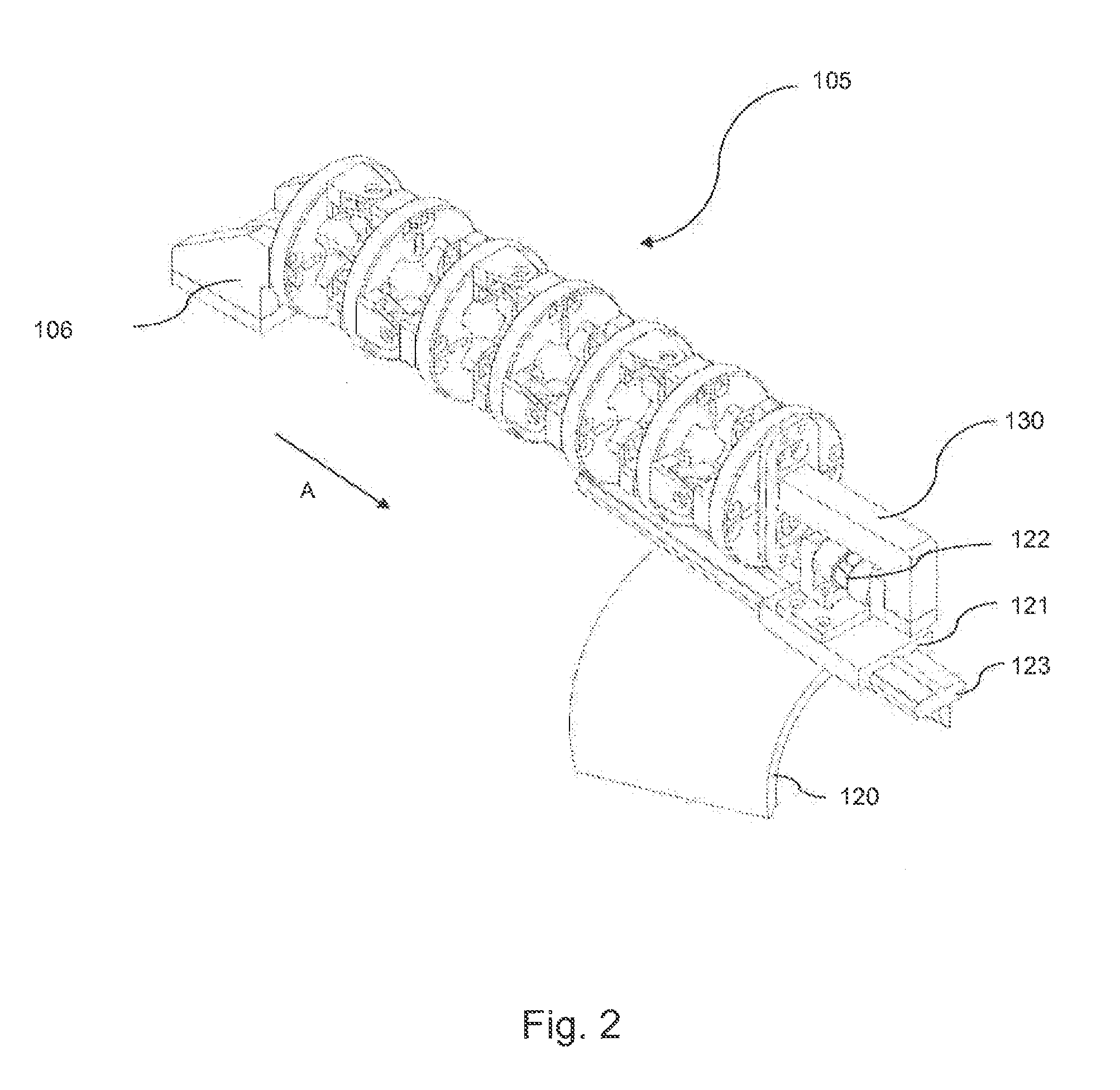Rehabilitation Robot
a robot and rehabilitation technology, applied in the field of rehabilitation robots, can solve the problems of high risk of damage to joints, no control over the position of the arm during exercises, and loss of mobility of the upper limbs as that of the lower limbs
- Summary
- Abstract
- Description
- Claims
- Application Information
AI Technical Summary
Benefits of technology
Problems solved by technology
Method used
Image
Examples
Embodiment Construction
[0042]The mobilization and rehabilitation device of the invention has the overall form of an exoskeleton in as much as it is positioned along the patient's arm, in parallel with its anatomical structure. Unlike conventional exoskeletons, the structure of which deploys in one piece from the torso as far as the patient's hand, the device of the invention is made up of an assembly created from a set comprising five independent modules and three attachment accessories. The five modules take care of the movements of the three joint complexes that are the shoulder complex, the elbow complex and the wrist complex, and of the two segmental rotations that are the ulnar rotation and the humeral rotation. The three attachment accessories are a dorsal holding device, an elbow shell, and a hand shell. The shells can be created by molding, for example in reinforced polymer. A range of shells of various sizes may be produced, or shells may be custom fitted to a patient. Each of the five modules ca...
PUM
| Property | Measurement | Unit |
|---|---|---|
| degrees of freedom | aaaaa | aaaaa |
| angles of rotation | aaaaa | aaaaa |
| rotation | aaaaa | aaaaa |
Abstract
Description
Claims
Application Information
 Login to View More
Login to View More - R&D
- Intellectual Property
- Life Sciences
- Materials
- Tech Scout
- Unparalleled Data Quality
- Higher Quality Content
- 60% Fewer Hallucinations
Browse by: Latest US Patents, China's latest patents, Technical Efficacy Thesaurus, Application Domain, Technology Topic, Popular Technical Reports.
© 2025 PatSnap. All rights reserved.Legal|Privacy policy|Modern Slavery Act Transparency Statement|Sitemap|About US| Contact US: help@patsnap.com



